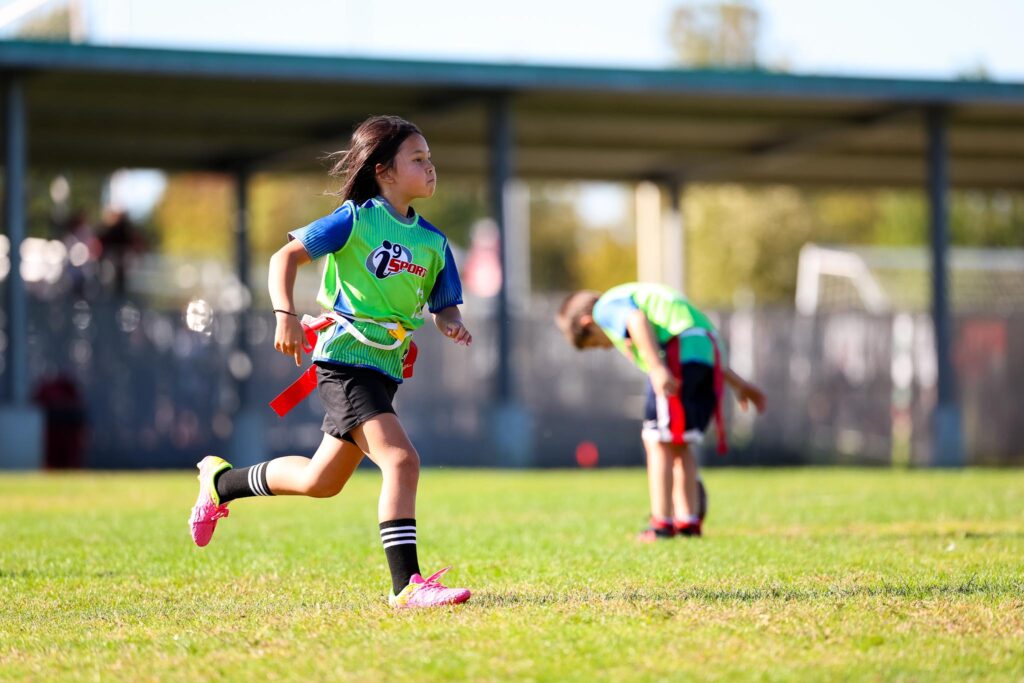How the Rise in Women’s Sports is Paving the Way for Girls in Youth Sports
As women’s sports start to gain more attention worldwide, we’re seeing the positive ripple effects on youth sports and young girls. The rise in women’s sports popularity brings an increase in opportunities and interest in sports for young girls.
According to the Aspen Institute State of Play 2023, the participation rate of girls in sport is at its highest rate since 2013. As girls mature, engaging in sports not only offers physical benefits but also contributes significantly to their overall well-being and success in various aspects of life, so it’s important to encourage participation and sticking with sports long term.
The rise in popularity of professional women’s sports has been instrumental in leveling the playing field and fostering confidence and interest in young female athletes. Girls around the world are benefitting from the current spotlight on women’s sports.
The Benefits of Playing Sports for Girls
Girls reap numerous benefits from playing sports no matter which one they choose to play. The increased physical benefits of sports at any age are clear, but it goes beyond the field, court, or track, imparting invaluable life lessons and skills that are instrumental in their personal and professional growth.
Girls who play sports are more likely to excel academically and have a higher chance of graduating from college. According to the Women’s Sports Foundation, high school female athletes are 92% less likely to get involved with drugs and 80% more likely to graduate compared to their non-athlete counterparts. The longer girls play sports, the more likely it is for them to succeed in activities outside of sports.
Research consistently highlights the various benefits of sports for girls, including improved self-esteem, resilience, leadership skills, and better mental health. Deloitte surveyed over 1000 women professionals aged 18 and over. The survey found that 85% of the women who played sports said the skills they developed playing sports were important to success in their professional careers. The findings are even higher among women in leadership roles (91%) and women who make $100,000 or more (93%). The same respondents said that the top skills they gained from competitive sports included teamwork (69%), leadership (41%), managing stress and pressure (36%), problem-solving (35%), and effective communication (34%).
So how do we continue to empower young girls through women’s sports?
Build it and They Will Come
When your daughter sees women athletes succeeding, it inspires her to dream big. By highlighting the achievements of women in sports and supporting the growth of women’s sports overall, we can encourage a wide range of sports participation.
For years, loyal fans have argued that women’s sports aren’t watched because of the lack of talent in the athletes, but because of the lack of accessibility, specifically in terms of broadcast opportunities. Media companies and sports brands heard these fans loud and clear. According to Forbes, media coverage for women’s sports has tripled over the last five years. Women’s basketball led the way in TV coverage hours at 2,055, followed by soccer (1,835 hours), tennis (1,810 hours), softball (1,392 hours), and volleyball (1,001 hours).
In 2022, sponsorship deals for women’s sports grew 20% year over year according to SponsorUnited. Deloitte is forecasting women’s sports will hit $1 billion in revenue for the first time in 2024, which is a 300% increase from their original forecast.
Thanks to the recent boost in media attention and visibility, new teams, new leagues, and new facilities are being created for multiple women’s sports. Most recently, the Professional Women’s Hockey League (PWHL) kicked off in Toronto with fans lining the streets to get in for the sell out game. According to the Associated Press, the demand for fan merchandise was so high, they nearly sold out of what they thought would be a month’s worth of stock. The PWHL consists of three teams from Canada and three teams from the US and is set to play 72 games as well as playoffs.
Regardless of whether you think women’s sports are just as entertaining as men’s sports, there is clearly an appetite for more exposure. In 2023, the NCAA Women’s Basketball Championship between LSU and Iowa saw 9.9 million viewers. This was not only an increase of 103% from last year, but this means it is the most viewed college basketball game (men’s or women’s) ever televised on ESPN.
The more visibility and broadcast time women’s sports receive, the more money media companies and fans spend. More money means more teams, more facilities being built, more scholarships, more NIL deals for female collegiate athletes, and overall more opportunities for young girls playing youth sports today to be the collegiate and professional female athletes of tomorrow.
What the Future Holds for Your Daughter in Sports
To further the growth of women’s professional sports, continued investment in grassroots programs and equitable opportunities for girls in sports are paramount. Encouraging participation in youth leagues, providing access to quality facilities, and support from parents are pivotal in nurturing the next generation of female athletes.
Supporting women’s sports in any capacity is a great way to encourage your daughter to participate in sports. They may find role models they wouldn’t have known existed had you not turned on the women’s basketball final or taken them to that women’s hockey game.
The rise in women’s sports paints a bright future for girls in youth sports. With emerging professional leagues, increased media coverage, and new facilities, your daughter and girls like her have more opportunities than ever to excel in sports and chase their dreams.
